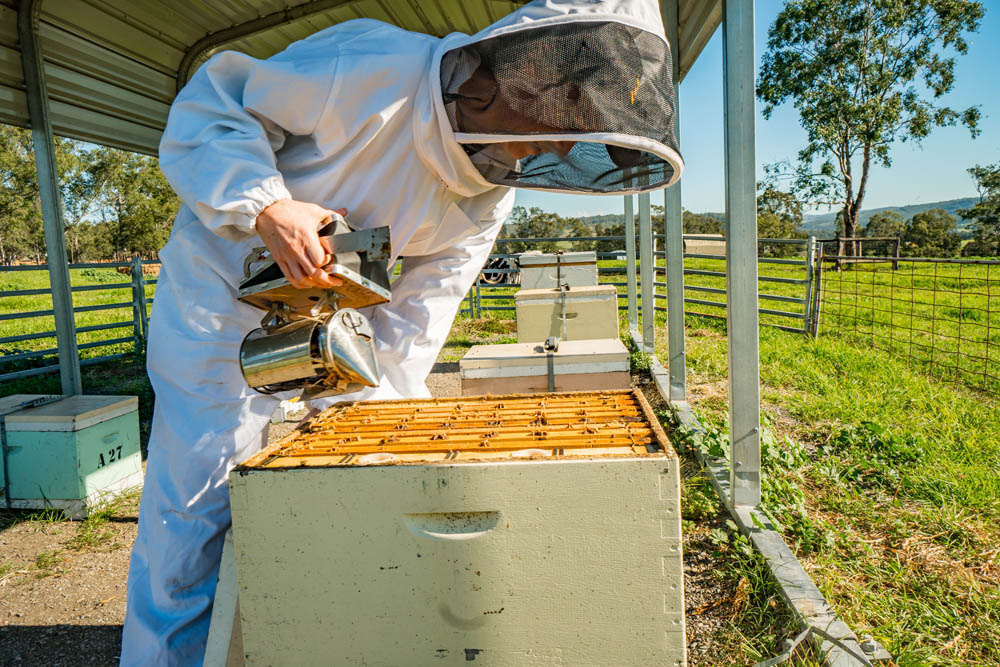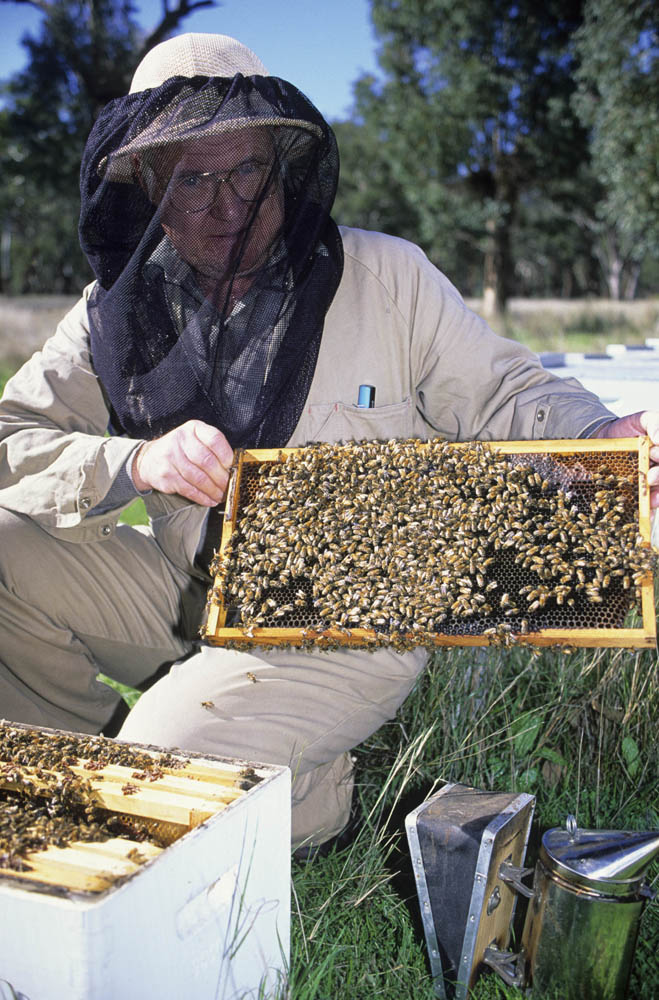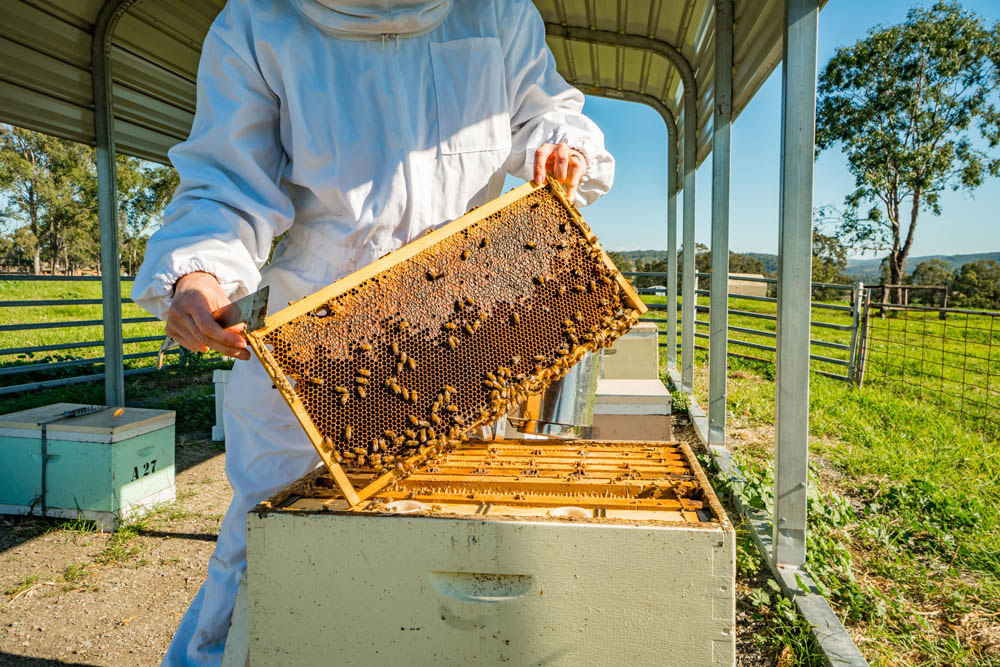- GVP $49 million est. Down 6% yoy.
- Production continues to be impacted by reduced floral resources.
- Demand for pollination services (not captured in GVP) is rising.
Conditions for apiarists (beekeepers) remained difficult during the year. Floral resources across the state have not yet recovered from last year’s bushfires and years of drought. Many apiarists rely on national parks and other public land to access flowering trees (especially eucalypts) and shrubs. These resources can take many years to recover from bushfires and drought. Floods also impacted some apiarists, especially on the north coast. However, a strong season for seasonal crops provided some relief and continued growth in almond plantations is increasing the demand for pollination services. COVID-19 did create some challenges in moving hives to where they were needed for pollination services.
Production and Price
Beekeeping: source of revenue (%)
- Source of revenue (%)
Source:
IBISWORLD (2021)
Wholesale prices for honey have risen strongly over recent year as supply was disrupted by droughts and bushfires. In 2020-21 honey prices were down slightly and production remained sluggish. GVP is estimated to have fallen 5.6%.
5
Beekeepers also continued to earn income from pollination services (not included in GVP) and demand is growing strongly as permanent tree plantings continue to grow. It is estimated that fees for pollination services rose by up to 23% from $130 per hive to as high as $160 per hive.
218
At least 35 crops (including almonds, avocados, cherries, apples and berries) rely on bees for pollination for their own production. Without honey bee pollination, crop yields would be significantly reduced. It is estimated that 12.8% of apiarist’s revenue comes from pollination services
136
and that share is expected to grow in future as more almond plantations come online. A rise in pollination services may impact honey production as many crops which require this service (such as almonds) do not necessarily produce quality honey.
Trade
During 2020-21 Australian exports of honey and beeswax fell by 4% to $57.1 million
128
as exports to China fell 45%. However, NSW exports increased by 20% to $11.5 million
128
as Saudi Arabia emerged as a new market and helped by a large increase in exports to the United Arab Emirates. Imports of honey and beeswax were also down 16% in Australia, to $48.8 million and 14% in NSW to $20.8 million, mainly due to a fall in imports from New Zealand and China.
128
Whilst Australia remains a net exporter of honey and beeswax, NSW has been a net importer since 2013.
Honey and beeswax trade balance ($'million)
- Australian trade balance
- NSW trade balance
Source:
GTA (2021)
Outlook

The compounding impact of drought and fire during 2019-20 continues to have some impact on NSW apiarists due to the time it takes for floral resources to recover. Nevertheless, the recent improvement in seasonal conditions should allow for a partial recovery in production. Wholesale prices have been rising but are expected to ease as production recovers. Over the longer term, increasing demand for pollination services from horticulture, primarily from almond growers, will continue to support industry incomes, though this may not be reflected in the gross value of production, which captures only the value of honey and beeswax produced.




